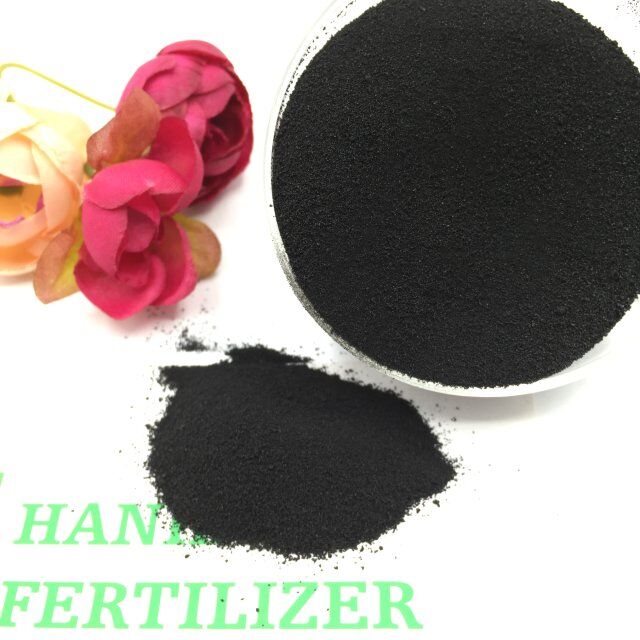
Nov . 06, 2024 14:14 Back to list
Premium NPK 18-3-6 Fertilizer for Enhanced Plant Growth and Soil Health
High-Quality 18-3-6 NPK Fertilizer Elevating Agricultural Productivity
Fertilizers play a crucial role in modern agriculture, serving as a means to enhance soil fertility and boost crop yields. Among the various formulations available, 18-3-6 NPK fertilizer has garnered attention for its balanced nutrient composition and efficacy in promoting healthy plant growth. This article delves into the significance of high-quality 18-3-6 NPK fertilizer, its benefits, and guidelines for optimal application.
Understanding NPK Fertilizers
NPK fertilizers are named based on their nitrogen (N), phosphorus (P), and potassium (K) content, represented by three numbers. In the case of 18-3-6, the numbers indicate that the fertilizer contains 18% nitrogen, 3% phosphorus, and 6% potassium. Each of these nutrients plays a vital role in plant development
- Nitrogen (N) Essential for vegetative growth, nitrogen is a key component of chlorophyll, the molecule responsible for photosynthesis. It promotes lush green foliage, improves leaf development, and enhances protein synthesis. Adequate nitrogen levels lead to vigorous plant health and higher yields.
- Phosphorus (P) This nutrient is critical for energy transfer and storage in plants, aiding in the development of roots, flowers, and fruits. Phosphorus promotes early plant growth, enhances flowering, and improves seed formation, making it especially important during the reproductive phase.
- Potassium (K) Often referred to as the quality nutrient, potassium strengthens plants’ overall health by regulating water uptake and enhancing stress resistance. It improves the quality of fruits and vegetables, increases disease resistance, and is integral in photosynthesis and enzyme activation.
Benefits of High-Quality 18-3-6 NPK Fertilizer
1. Balanced Nutritional Profile The 18-3-6 formulation provides a balanced mix of essential nutrients, catering to both the early growth stages and the maturation phases of crop development. This balance ensures that plants receive the necessary nutrients at the right time.
2. Enhanced Yield High-quality fertilizers ensure that plants have access to readily available nutrients. As a result, farmers can expect better crop yields and improved profitability. Studies have shown that the judicious application of 18-3-6 NPK fertilizer can lead to significant increases in both quantity and quality of produce.
high quality 18-3-6 npk fertilizer

3. Improved Soil Health Quality fertilizers contribute to soil health by improving its structure and fertility over time. They can help replenish the nutrients that crops deplete from the soil, ensuring sustainability and long-term productivity.
4. Versatility The versatility of 18-3-6 NPK fertilizer makes it suitable for a wide range of crops, including vegetables, fruits, and grains. It can be used in various farming practices, from traditional agriculture to modern hydroponics.
Application Guidelines
For optimal results, proper application techniques should be followed
- Soil Testing Before applying any fertilizer, conducting a soil test is essential. This will help determine the existing nutrient levels and whether additional fertilization is necessary.
- Timing The timing of fertilizer application is crucial. For many crops, applying 18-3-6 NPK fertilizer at planting time and during key growth stages can yield the best results.
- Method of Application It can be applied through broadcasting, banding, or foliar feeding, depending on the specific needs of the crop and soil conditions.
- Follow Recommendations Always adhere to the manufacturer’s guidelines regarding application rates to avoid over-fertilization, which can lead to nutrient runoff and environmental harm.
Conclusion
High-quality 18-3-6 NPK fertilizer is an invaluable asset in agricultural practices, providing the essential nutrients that support plant health and maximize productivity. By understanding its components and adhering to best practices for application, farmers can harness the full potential of this fertilizer. Ultimately, the effective use of 18-3-6 NPK fertilizer not only benefits individual growers but also contributes to global food security, making it a cornerstone of sustainable agriculture.
-
Premium Amino Acid Fertilizer | Rapid Plant Growth Booster
NewsJul.31,2025
-
10 10 10 Fertilizer Organic—Balanced NPK for All Plants
NewsJul.30,2025
-
Premium 10 10 10 Fertilizer Organic for Balanced Plant Growth
NewsJul.29,2025
-
Premium 10 10 10 Fertilizer Organic for Balanced Plant Growth
NewsJul.29,2025
-
Premium 10 10 10 Fertilizer Organic for Balanced Plant Growth
NewsJul.29,2025
-
50 Pound Bags of 13-13-13 Fertilizer for All Plants – Bulk & Organic Options
NewsJul.28,2025
